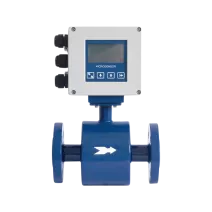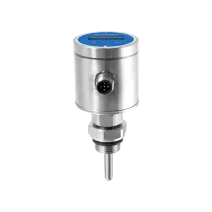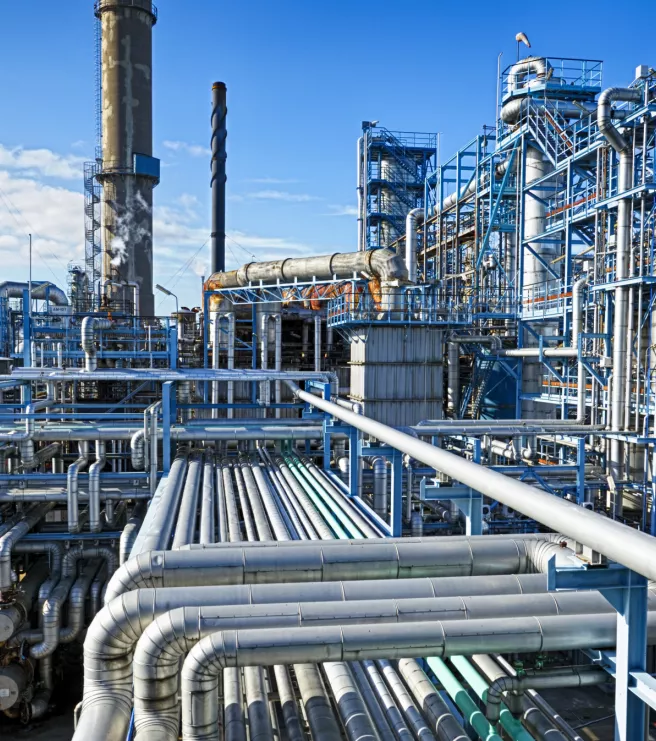Products

Magnetic flowmeters
- Multi-electrode structure ensures high accuracy
- Accuracy isn't influenced by the fluid density, viscosity, temperature, pressure and electrical conductivity changes.
- Open flow without moving parts in measuring pipe, no pressure loss.
- Low-power consumption

Flow switches
- Self-luminous OLED display
- Optional power supply & mounting interfaces
- Overvoltage, overcurrent, reverse polarity protection
- With temperature compensation and calibration
Our offer to you
We offer standard flowmeters but can also help you with a customized design or a complete measurement solution.
Understanding flow measurement
The working principle of Electromagnetic Flowmeters is based on Faraday's Law of Electromagnetic Induction. When a conductive fluid flows through the meter, it generates an induced voltage within the liquid conductor. This voltage is directly proportional to the fluid's velocity, the magnetic flux density, and the flowmeter's interior diameter. The voltage is detected by a pair of electrodes mounted on the tube wall of the flowmeter. The formula for the induced voltage is:
U=K×B×V×D
where U is the induced voltage, K is the instrument constant, B is the magnetic flux density, V is the fluid velocity, and D is the interior diameter of the measuring pipe.
Electromagnetic flowmeters are specifically designed for use with conductive liquid media. They are widely used across various industries due to their accuracy and reliability.
Difference between flow meters and flow switches
Flow meters
Flow meters are devices designed to measure the flow rate of liquids or gases in a system. These instruments provide quantitative data about the volume, mass, or velocity of the fluid passing through them. Flow meters are critical in processes that require precise control and monitoring of fluid flow.
Key features of flow meters:
- Measurement Capability: Flow meters quantify the actual flow rate, providing detailed data on the amount of fluid passing through the system.
- Applications: Used in industries such as water treatment, chemical processing, oil and gas, pharmaceuticals, and food and beverage production.
- Data Output: Typically, flow meters provide continuous real-time data that can be used for monitoring, controlling, and optimizing processes.
Flow switches
Flow switches, on the other hand, are devices that monitor the flow of liquids or gases and activate an alarm or control signal when the flow reaches a predetermined rate. Unlike flow meters, which provide detailed flow rate data, flow switches are used primarily for safety and protection purposes.
Key features of flow switches:
- Monitoring Capability: Flow switches detect whether the flow is within the desired range and trigger an action if the flow rate deviates from set parameters.
- Applications: Commonly used in systems where maintaining a specific flow rate is critical for safety, such as cooling systems, lubrication systems, and fire protection systems.
- Control Output: Flow switches do not provide continuous flow data but instead offer on/off signals or alarms to indicate flow rate deviations.
-
FunctionalityFlow meters measure and provide detailed data on the flow rate, while flow switches monitor and alert when flow rates deviate from a set threshold.
-
Data outputFlow meters provide continuous, quantitative data, whereas flow switches provide binary (on/off) signals.
-
Application focusFlow meters are used for precise measurement and control in various industrial processes. Flow switches are used for safety and system protection to ensure flow rates remain within safe limits.
-
Complexity and costlow meters tend to be more complex and expensive due to their detailed measurement capabilities. Flow switches are generally simpler and more cost-effective for applications requiring only flow monitoring and alerts.
Choosing the right device
Selecting between a flow meter and a flow switch depends on the specific needs of your application:
- If precise measurement and control of fluid flow are required, a flow meter is the appropriate choice.
- If the primary concern is ensuring that the flow rate remains within a safe range and triggering an alarm or control action if it doesn't, a flow switch is more suitable.
For more information on selecting the right flow measurement device for your project or application, please contact our team of experts.


